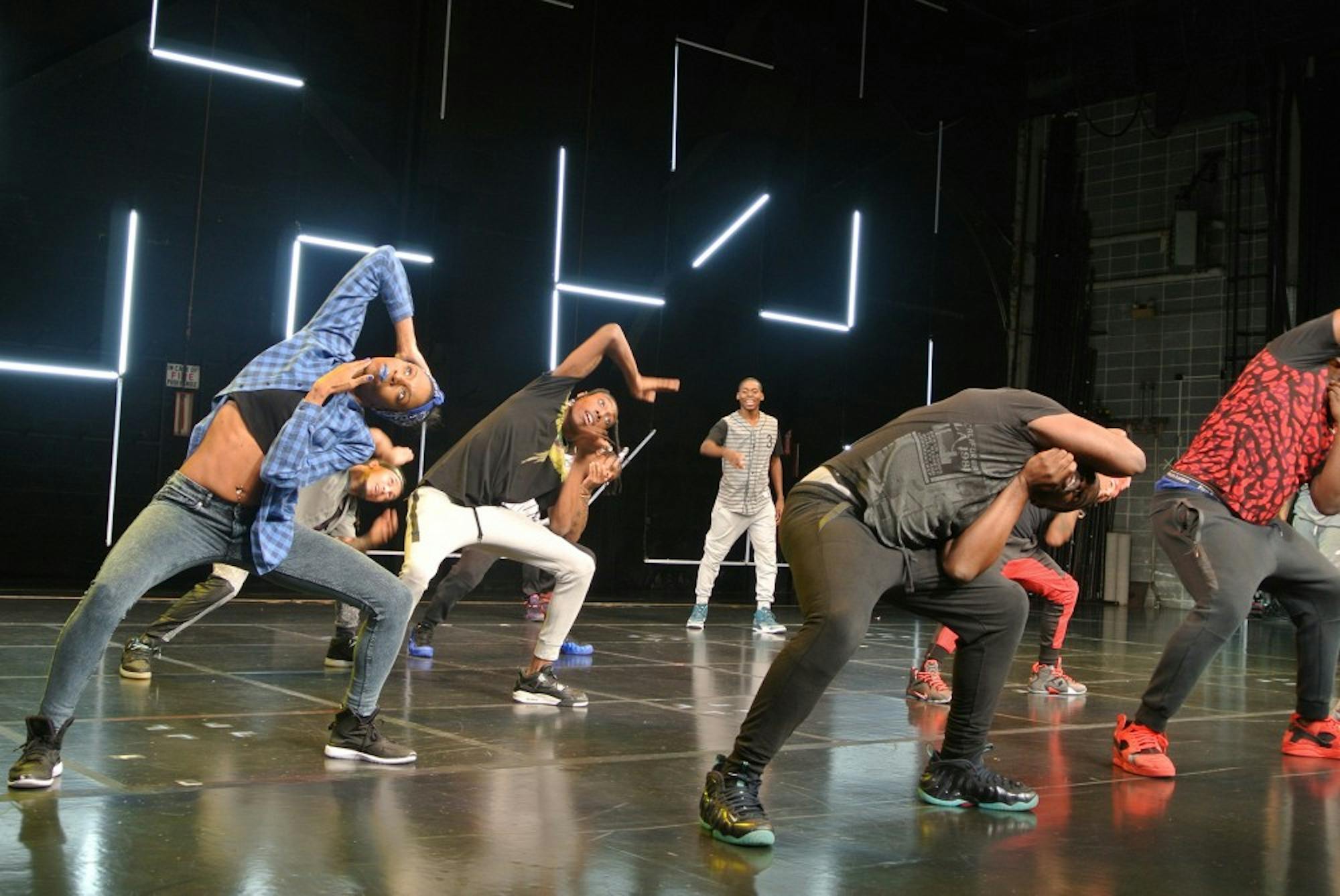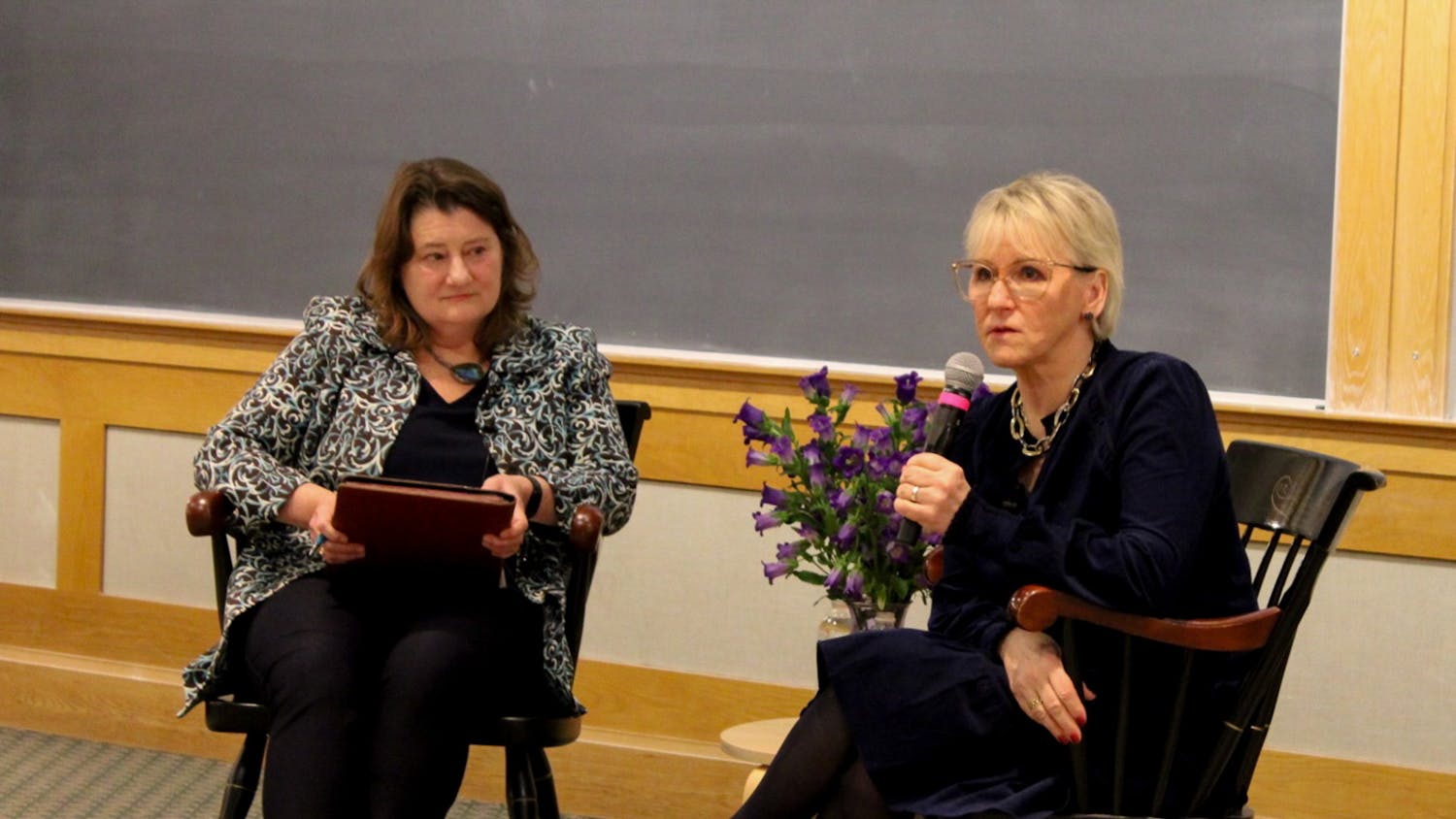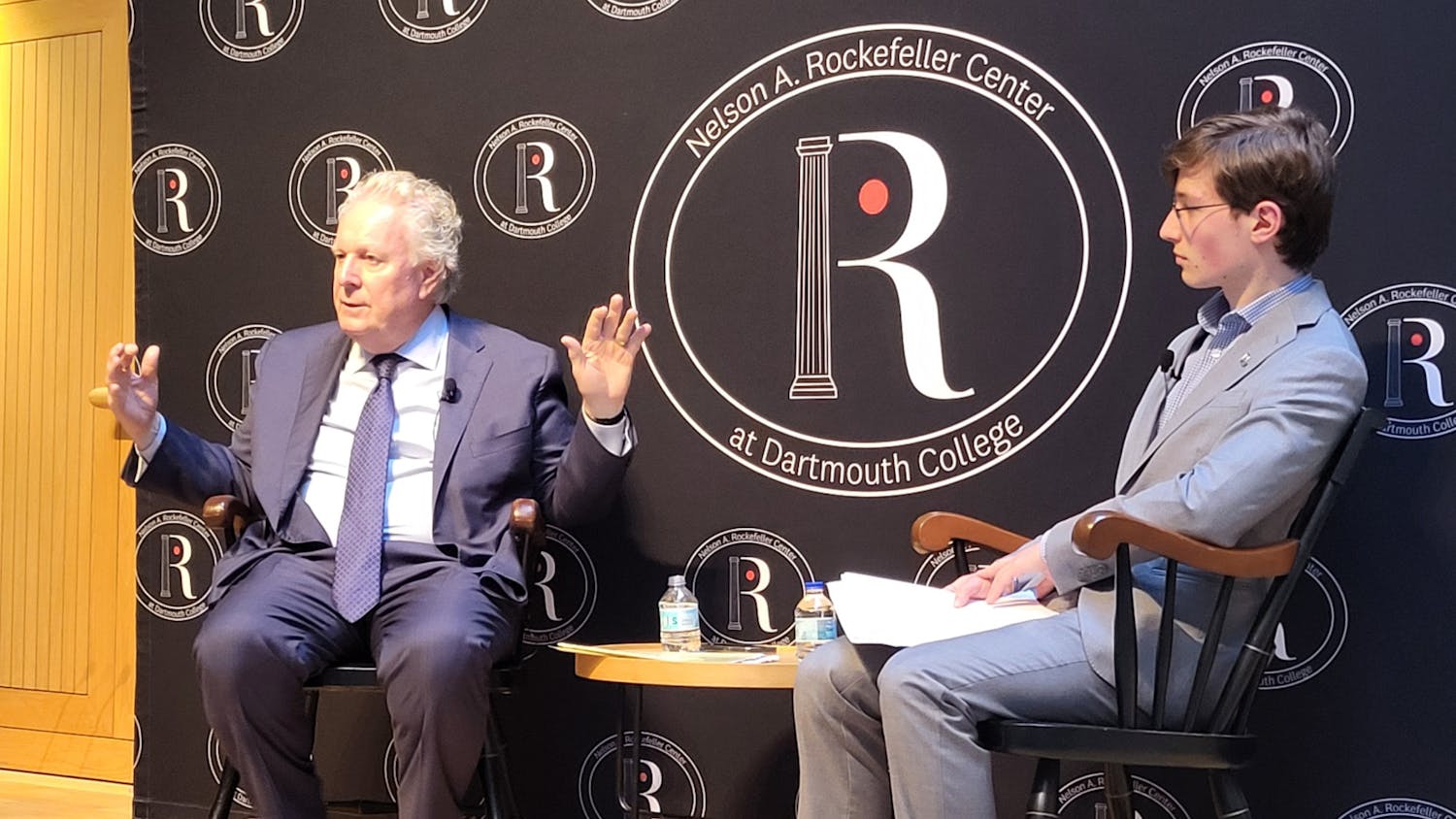The creativity that saturates the atmosphere when FLEXN performs is apparent to any outsider.
With lights dimmed and music pounding, improvisational street dance group FLEXN showcased its skill on the dance floor at School House’s kick-off event for the year. The event began with an introduction to the members of FLEXN and the dance style, flex, followed by a video showcasing solo performer Regg Roc.
The movements are part sharp, part fluid and part improvised, but wholly mesmerizing. The impact of these bodily expressions is accentuated when the stage is filled with dancers — sometimes synchronized, sometimes not.
The show is the brainchild of Reggie “Regg Roc” Gray and Peter Sellars. Gray, born in New York, began dancing at a young age and competed at an elite level in various competitions, eventually becoming the creator of the identity flex has taken on today. Peter Sellars is an internationally known master of creative interpretation of staged pieces that are often steeped in tradition, such as Mozart’s “Don Giovanni,” bringing them to the front and center of the present, often with diverse casts and engaging staging.
Central to their work and artistic expression are their performances’ intersections with social justice. They take activism from the streets to the stage, speaking and sharing their platform through movement. Beyond the stage, FLEXN is active in studios around the world, from Australia to England and Italy, teaching and interacting with students.
However, the activist identity that this form of art has taken on wasn’t measured or deliberate. Instead, art and activism converged naturally for the dancers of FLEXN.
“For us, we tried to talk through dance and movement, and now, it’s become a part of everyday life,” Gray said. “We don’t call ourselves activists or artists, we just speak out when there’s something we can speak about.”
Yet their grassroots nature enables them to speak through performance about social issues, including race and police brutality, because they were “raised up in the environment” and “perfectly fit to showcase it,” Gray said.
While creating one of his pieces, Samuel ‘Sam I Am’ Estavien was similarly inspired by his experience in the aftermath of Trayvon Martin’s shooting.
“I felt the climate of what was going on, felt a certain kind of rage,” Estavien said. But he realized that “anger isn’t going to save anything; I’ve got to be the change.”
Because of flex’s freestyle nature, the nuances in the meanings of this dance style’s different movements often take shape through a collaborative process. If a movement can take on a deeper or different meaning, the dancers will let those ideas roll into the conversation when they get together and start improvising.
“When [a dancer] does a new bone-break or a new connect, it can represent a broken body or broken mind, depending on how a person feels,” Gray said.
The evolution from a nuanced street style to an internationally renowned art form was done step by step, show by show. Gray, speaking about how everyone wildly cheered in the audience of a Brooklyn show, knew that he had something special, because he had just “impressed one of the hardest crowds in the world, [his] hometown.”
FLEXN’s visit to Dartmouth marks the last leg of its 2016 tour. For Gray, it was important “to go to different cities and places that really don’t know too much about [flex], and the social movement”.
For Charlotte Brathwaite, associate director of FLEXN, emphasis on the scholarship in addition to the performance of a new art movement is paramount, and by visiting colleges and universities, this movement has the opportunity to gain exposure to the “cutting edge of the next new thing, in a place where there are so many new subscribers to dance, theater and art,” she said.
The international stage has a few downsides, as expected. For Sean ‘Brixx’ Douglas, the different cultures that naturally come with travel to foreign countries are challenging to navigate. Yet, he notes that there is a universality through dance — “people relate to the message and feel the same things, even though they might not get the language.”
The worst part? The ear-popping pressure on flights, Brixx said with a wide smile.
The future of FLEXN is headed towards an even more diversified portfolio. In the next five to ten years, there is talk about a documentary, opening buildings and, of course, the continued evolution of its current piece.
The creativity that saturates the space around FLEXN is evident through a culture and language FLEXN can call its own, such as “modd” and “labbing” — a mark of ingenuity to outsiders but that comes completely naturally to the dancers. This language is further evidence of their immense creativity, notes Brathwaite, adding that, “this is one of the most innovative and creative groups I work with, constantly developing new moves, new heights of experience.”
“The life of this piece and company is so inspiring. You could repeat [the piece], but to actually repeat it would be to create something completely new,” Brathwaite said. “It’s being created right in front of your face.”
Asked about what audience members can expect during the show, Estavien said just one word: “revolution.”
FLEXN’s final performance will take place tonight at 7 p.m. in the Moore Theater.




